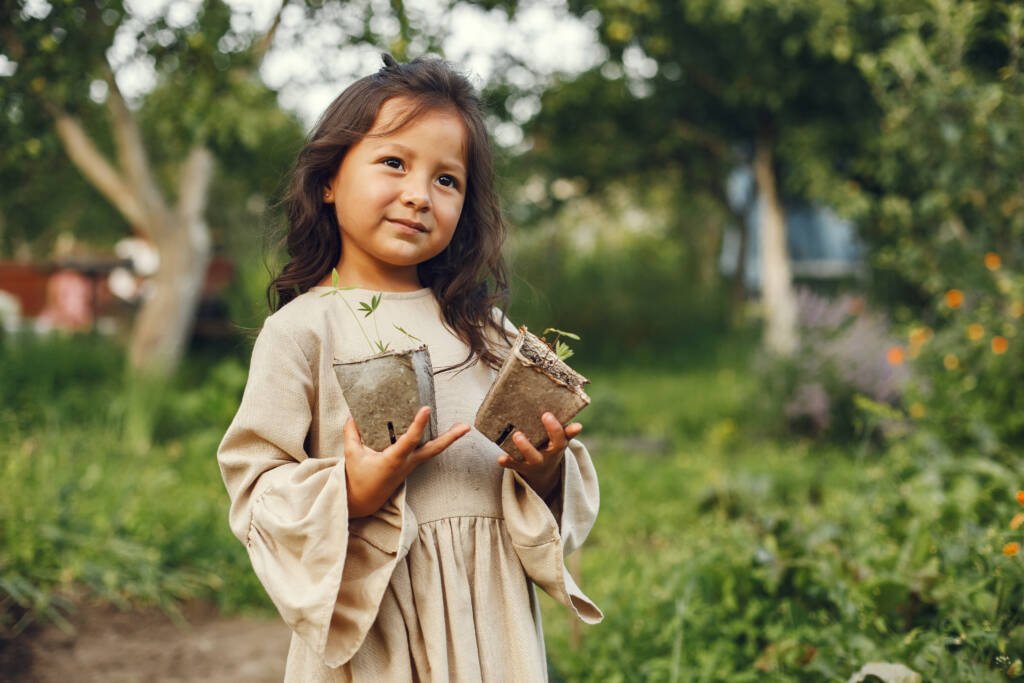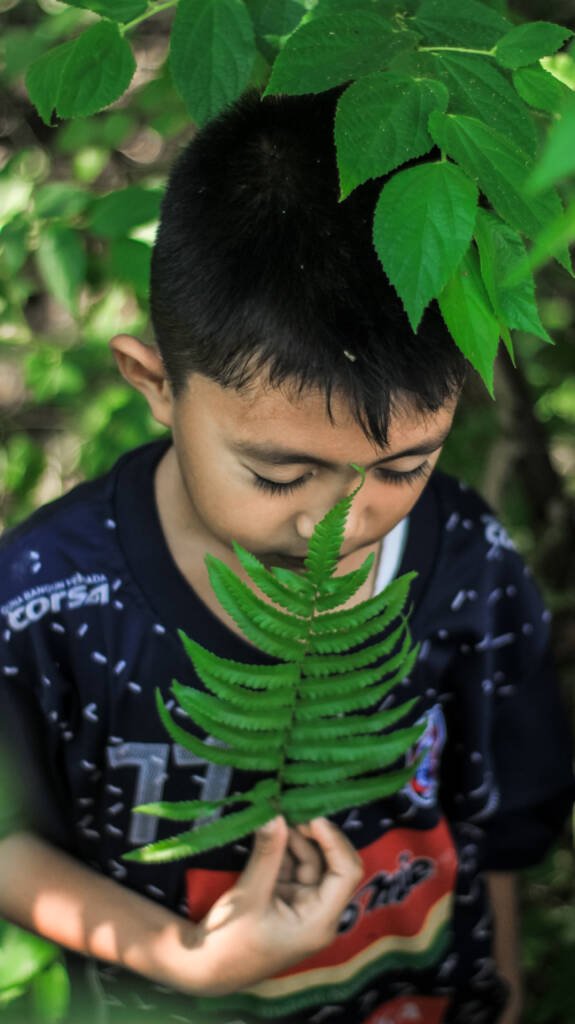Lessons Among The Trees : Discovering Knowledge Where Nature Leads
In the stillness of a forest glade, beneath the sheltering arms of ancient trees, where birdsong replaces the school bell and the rustle of leaves becomes the hum of a living textbook — there, true education begins. Bharat has always known this.
Long before the advent of chalkboards and concrete schoolrooms, our ancestors gathered under banyan trees, along riverbanks, and amidst groves to engage in the sublime pursuit of learning. The Ashramas and Gurukuls of ancient India were not cloistered halls — they were sanctuaries nestled in nature. There, education was not limited to memorizing facts, but was a sacred process of becoming — of aligning the learner with the rhythms of the cosmos, the truths of the self, and the laws of dharma. Knowledge was not stored in textbooks alone, but whispered by the winds, taught by the trees, and etched in the flow of rivers.
Today, as we hurtle through a world besieged by screens, stress, and sterile routines, the wisdom of outdoor learning stands as a luminous beacon. The call to step back into nature is not a nostalgic yearning for the past — it is an urgent call to reclaim what education was always meant to be: a living, breathing, transformative experience.
Nature: The Original Classroom
Modern science now echoes what our sages once lived: that the natural world is not merely a backdrop but a powerful teacher. Neuroscience reveals that children who learn outdoors demonstrate enhanced attention spans, improved memory retention, reduced anxiety, and stronger emotional well-being. Ecologists warn us of a “nature-deficit disorder” afflicting today’s children — a consequence of growing up indoors, disconnected from the very world that sustains them.
When a child plants a seed and watches it grow, they learn biology, but they also learn patience. When they trace the path of an ant, they study ecosystems, but they also discover wonder. When they sit in silence beneath a tree, they don’t just hear the breeze — they hear themselves.
Such learning is not just cognitive. It is sattvic — nourishing the body, calming the mind, and elevating the spirit.


Bridging Ancient Wisdom with NEP 2020
India’s National Education Policy 2020 envisions an education that is holistic, integrated, and experiential. It urges us to move beyond rote memorization and to design learning experiences that are rooted in local context, cultural heritage, and environmental awareness. The policy’s clarion call for “bagless days,” vocational training, and experiential pedagogies is a profound opportunity to reimagine the classroom itself.
Outdoor classrooms, then, are not a luxury — they are a necessity. In them lies the blueprint for NEP’s dream: a space where head, heart, and hand are harmonized, where curiosity leads and reflection follows, where learning is deeply human, deeply Indian, and deeply ecological.
Designing Green Learning Spaces: A Sacred Act
Creating outdoor classrooms is not merely a matter of infrastructure. It is an act of reverence — a return to sacredness in schooling. It means weaving courtyards, kitchen gardens, herbal groves, butterfly parks, open-air libraries, amphitheatres, and rainwater harvesting systems into the very architecture of education.
It means inviting the sun, the wind, the soil, and the stars to be co-teachers.
It means transforming every school into a microcosm of prakriti — nature in her wisdom and abundance.
And it means designing learning environments that do not just produce high-achievers, but grounded, grateful, and globally-conscious citizens.
The Pedagogy of Presence
Outdoor learning is not a subject. It is a pedagogy — a way of seeing and being. It invites learners to observe deeply, to feel kinship with the non-human world, and to understand that the Earth is not a resource to be exploited, but a relative to be honored.
In doing so, it nurtures ecological consciousness — one of the most vital forms of awareness for the 21st century learner. In a time of climate crisis, environmental degradation, and urban alienation, outdoor classrooms rekindle the lost connection between children and the Earth — not through lectures, but through lived experience.
Beyond the Classroom: A Spiritual Reorientation
Let us be clear — this is not merely about pedagogy or policy. This is about parampara. It is about returning to the soul of Bharat’s educational legacy, where learning was never divorced from life, where the guru pointed not just to the scriptures, but also to the sky.
It is about reawakening the sacred within education.
For when a child learns under the sky, they look up more often. They grow not just in knowledge, but in humility. They understand that they are part of a vast, interwoven whole. This is the beginning of atma-bodha — self-awareness — which is the true goal of all learning.
The Way Forward
In these times, designing outdoor classrooms is not a pedagogical experiment — it is a civilizational imperative. To educate in alignment with nature is to educate in alignment with truth.
Let us, then, build schools where the Earth is the curriculum, where trees are companions, where silence is valued, and where the question “What did you learn today?” is answered not with grades, but with awe.
Let us remember: we are not preparing our children merely for a career. We are preparing them for life — and life, in its fullest, deepest, and most beautiful form, is taught best beneath the open sky.
Let every school in Bharat reclaim this legacy.
Let every teacher become a gardener of wonder.
Let every child become a seeker — curious, conscious, and connected.
Let us return — not to the past — but to the perennial. Let us walk forward — barefoot on the Earth, head lifted to the sky, heart open to learning once more.
Where nature teaches, the soul remembers.
“विद्या ददाति विनयं विनयाद् याति पात्रताम्।”
True education cultivates humility — and humility is born in the lap of nature.



